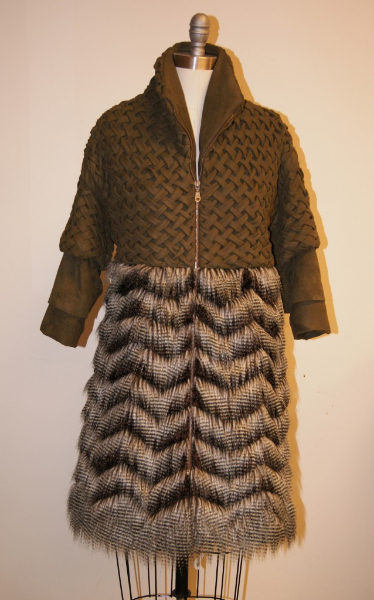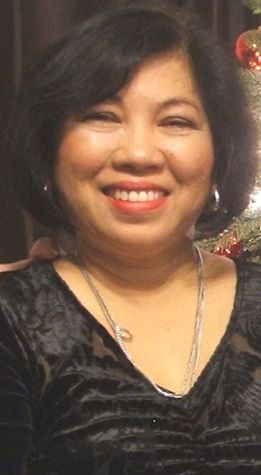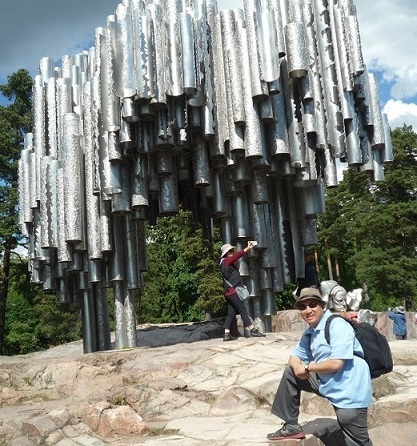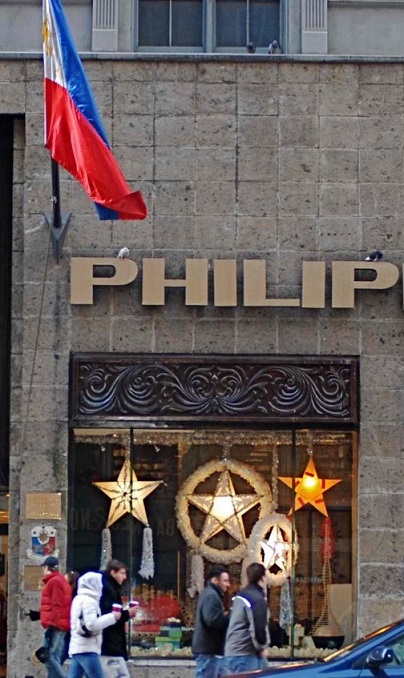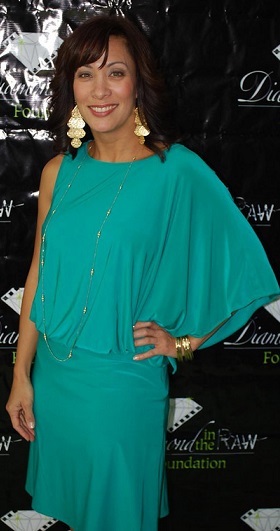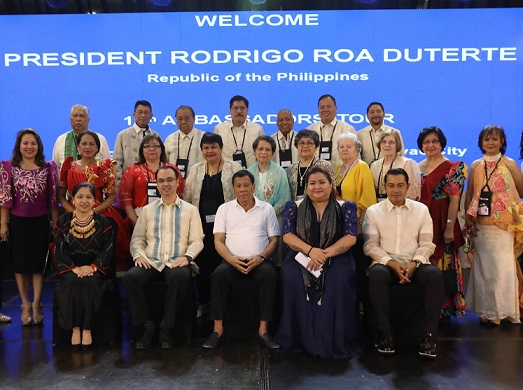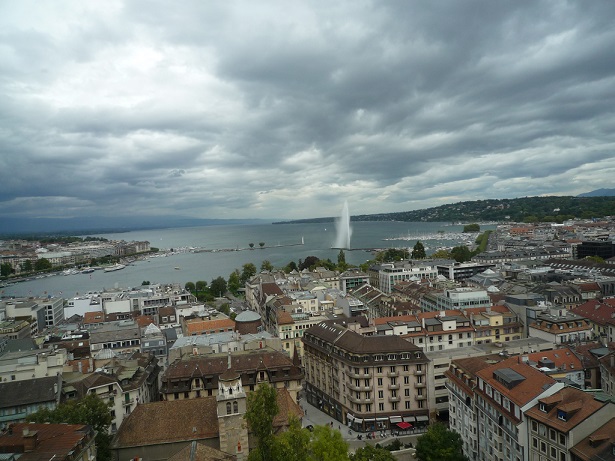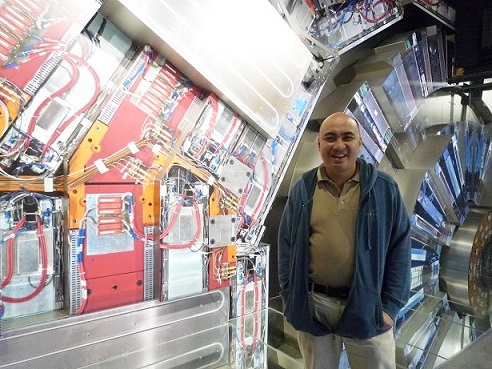Geneva: Home of the army knives, sweet chocolates and the World Wide Web

The author outside the Palais des Nations, which is the European headquarters of the United Nations.
Switzerland is one of Europe’s most popular destinations because of its mountain hiking and skiing resorts, lovely scenic nature parks, fancy watch-making shops, colorful Swiss army knives, and of course, sweet tasty chocolates!
I do love each and every one of these things, but the most indelible impression I’ve had of Switzerland thus far has been its long history of peace and harmony. With its long-running reputation for its “political neutrality,” it has avoided direct involvement and carnage in both the First and Second World War.
To understand how Switzerland became a beacon model nation for peace, I undertook a long-awaited tour of one of the nation’s most well-known cities, Geneva.
Having experienced the loud but jubilant festivities of Germany’s Oktoberfest in Munich, I then opted for a slightly quieter change in pacing and scenery by choosing Geneva as my next stopover in my grand Central European adventure.
My train travel from the Bavarian region of Germany lasted some five hours, with splendid views of pristine mountains, lakes and meadows entertaining my eyes throughout the whole trip. Upon arriving at Geneva’s central train station, kindly officers led by one of my best friends serving in the diplomatic service from the Philippine Mission to the United Nations (UN) office in Geneva were on hand to fetch me. I then was taken to drop off my luggage at the residence of the Philippine Ambassador to the UN in Geneva Cecilia Rebong, my gracious host and a longtime family friend who was Consul General in New York from 2003 to 2011. She had also served at the Consulate under my late father Ambassador Willy Gaa when he was Consul General in New York in the late 1990s.
Wasting no time on my first day in the city, my friend then immediately took me to tour Geneva’s Palais des Nations, the European headquarters for the United Nations and an icon of the city. This attractive complex was constructed between 1929 to 1938 as the original headquarters for the League of Nations, the now-defunct predecessor to the UN. As the League failed to live up to its mandate of brokering lasting peace through diplomacy after World War I (in large part because the United States refused to join), it then served as the home of the UN Office in Geneva in 1946, a year after the end of the Second World War.
Walking towards the UN building, the air of the city was so cool, fresh and invigorating, reflecting the cool and clean mountainous valley area which Geneva lies in. We were lucky enough too that the sun was beaming down upon us. Within and around the UN, I observed how all signs were written in both French and English, which isn’t surprising given that Geneva is located within the western French-speaking region of Switzerland (the multilingual country’s other national languages are German, Italian and Romansch).
Outside of the Palais, I saw near some sparkling fountains a giant red wooden chair missing a leg, and my friend explained how this “Broken Chair” symbolized the UN and the city of Geneva’s contribution to world peace in that the efforts to help build a more secure and civilized world are “incomplete” and “ongoing,” which of course does make perfect sense! The exterior and interior of the Palais has a very authentic classical European feel in architecture and design. Unlike the main UN headquarters in New York, which is larger in size and property and retains the atmosphere of a more formal and rigid contemporary work environment, its sister office here in Switzerland seemingly comes across as more laid-back and relaxed, and this could be associated with the fact that Geneva compared to New York definitely has a less frenetic and congested urbanized lifestyle.
As we took a tour inside the UN building, I learned that another main difference between the two UN offices in New York and Geneva is that while the Manhattan headquarters is the international organization’s policy maker and implementer on political and security issues, the Swiss office is chiefly concerned with addressing humanitarian aid to countries in need around the world, particularly those suffering from war and famine. Seeing how the Palais is adorned with attractive statuettes and paintings even in some of its larger conference rooms, I can see how this city is an ideal work environment for diplomats and expats.
My wholesome day touring the UN concluded with a relaxing dinner and reunion with my fellow friends in the diplomatic corps assigned with our Philippine Mission to the UN in Geneva. After a brief visit to their posh offices, we then went on a stroll through the nearby Jet d’Eau, which for me is Geneva’s most unforgettable landmark. The Jet is the centerpiece attraction of Geneva’s beautiful lake, and anyone who visits the city and doesn’t take at least a few hours to walk alongside the paths along the lake to appreciate the scenic views of the surrounding mountains, hills and historic buildings is seriously missing out. The Jet itself is a giant water jet which shoots 140 meters in the sky at all times. The air still felt cool and refreshing as the early nighttime hours fell upon the city, with the sun still up and the skies still blue. We completed the night with a delicious meal of fondue, a local Swiss specialty dish of melted cheese served in a pot over a chafing stand heated by a candle, and then eaten by way of dipping bread into the cheese with long-stemmed forks. I was then reminded of how Switzerland is just as well-respected for its cheese as much as for its world famous chocolates.
The next few days offered me the chance to explore Geneva’s charming Old Town streets and museums. My best friend and host led me to see up close the city’s celebrated Reformation Wall, which at its center has four carved giant statues of Europe’s major Protestant/Calvinist reformers of the 16th century: Theodore Beza, John Calvin, William Farel and John Knox. It was riveting to think how these individuals played as much of a significant role in the European Reformation movement as the prominent German theologian Martin Luther had.
We also took the time to explore Geneva’s regally-designed Patek Philippe Museum, which has on display some of the finest watch collections I have seen anywhere. Seeing some of the oldest watches ever made dating all the way back to the 1500s was mind-boggling enough, and to think how technologically ahead of their time they were was due to the ingenuity of Europe’s first watchmakers.
One of our final stops was at the city’s famed CERN (European Organization for Nuclear Research) institute headquarters. We took a public tram to where the institute is located at the suburb outskirts of Geneva. The free exhibition here taught me how CERN’s primary function is to provide the particular accelerators and other infrastructure needed for high-energy physics research. Scientists from literally all over the globe have collaborated with one another in conducting important research and experiments here. This was where the World Wide Web software was born over 20 years ago, one of many inventions which we should credit the Swiss for in helping to create our modern way of life the way it is today.

